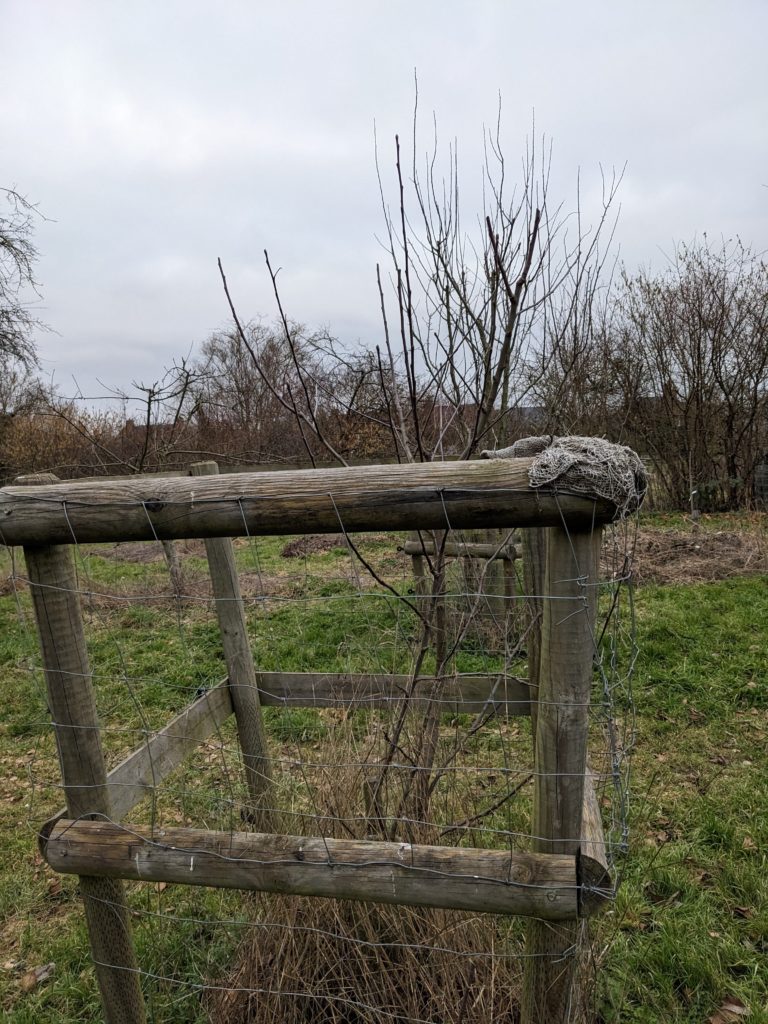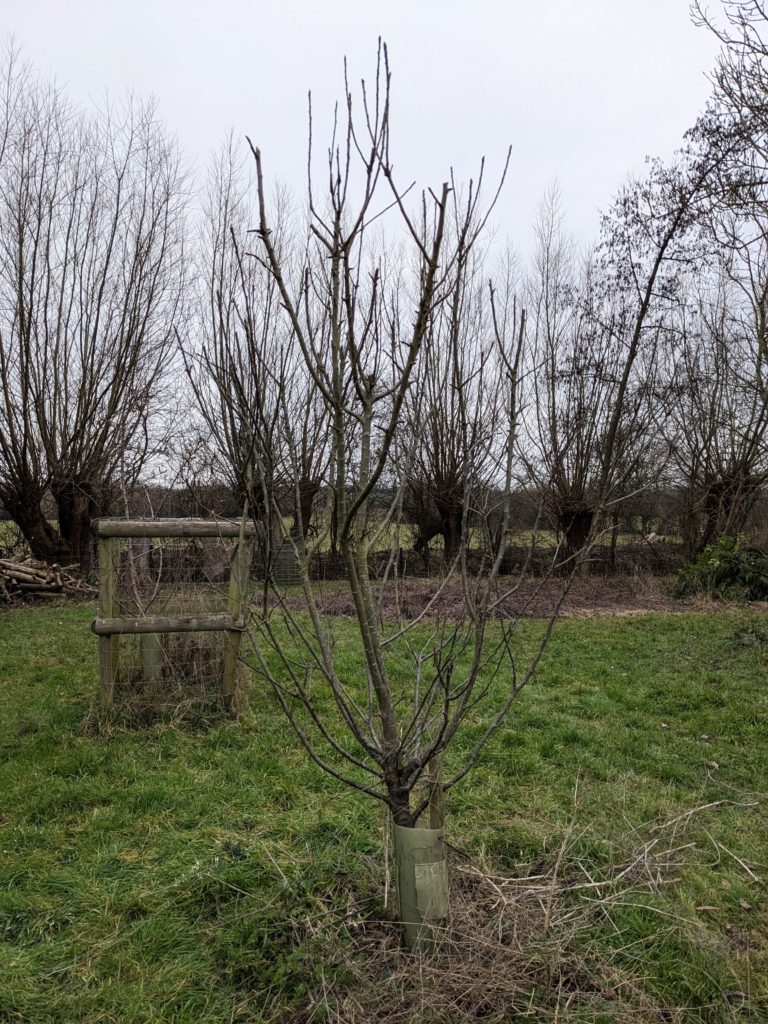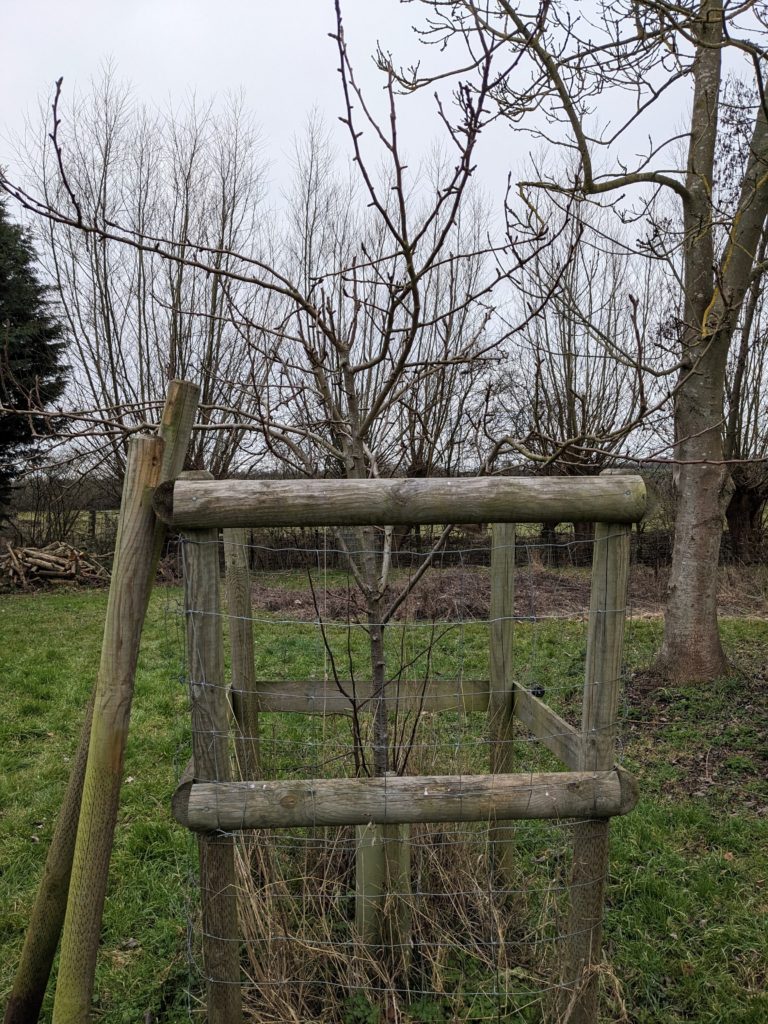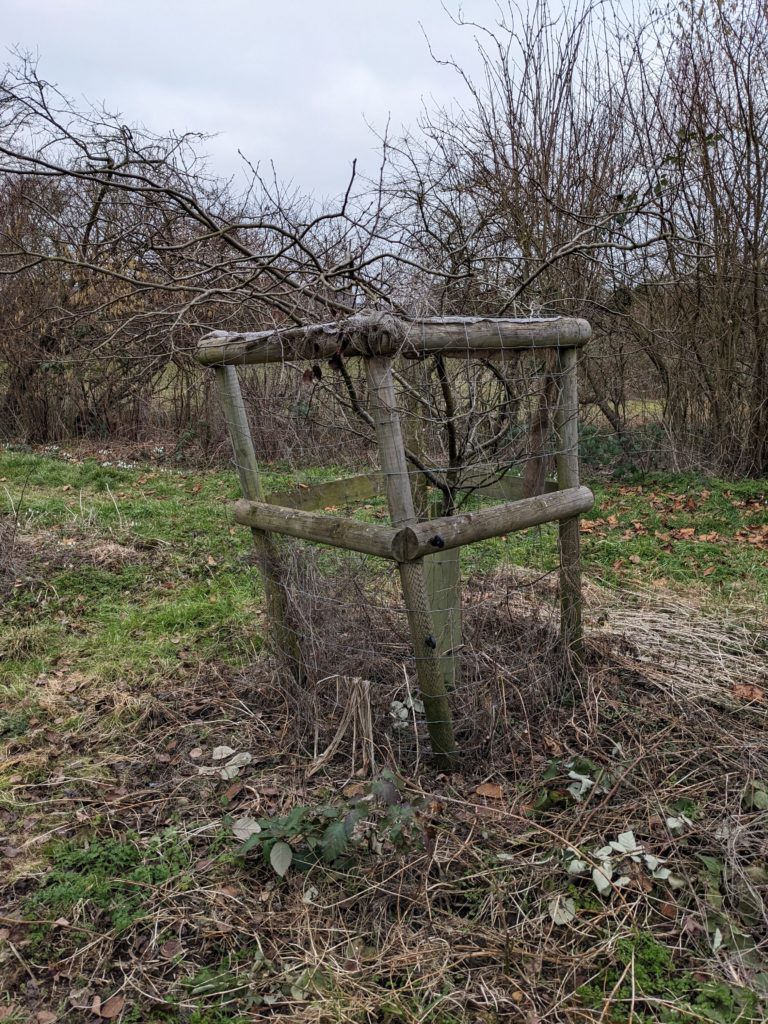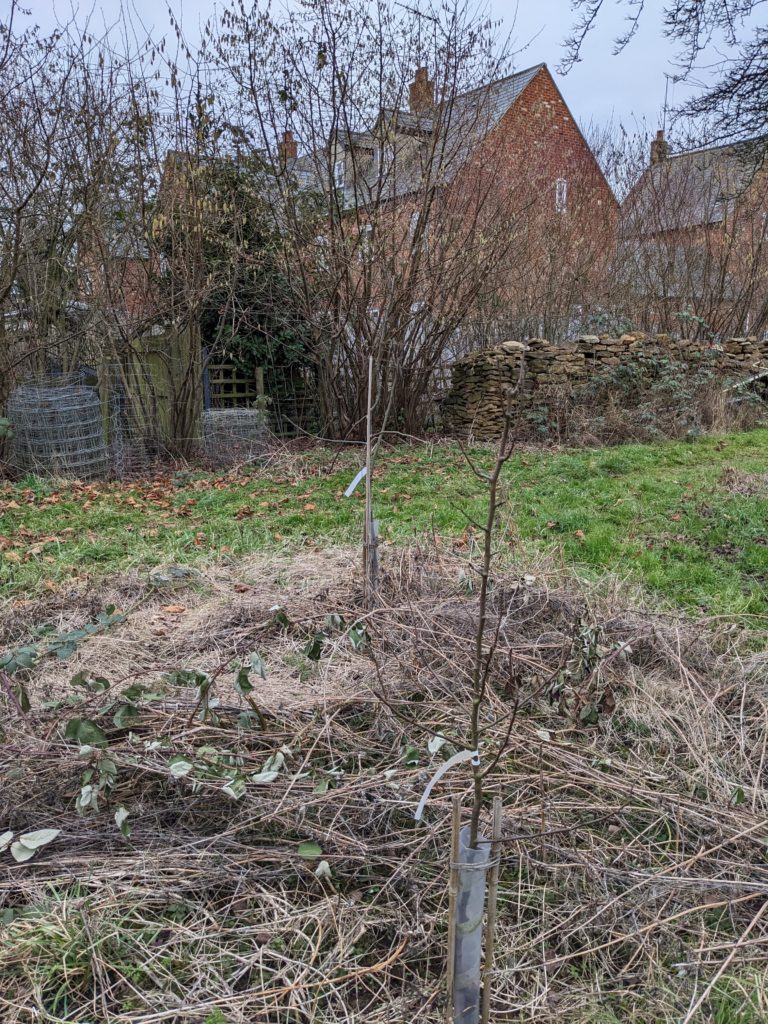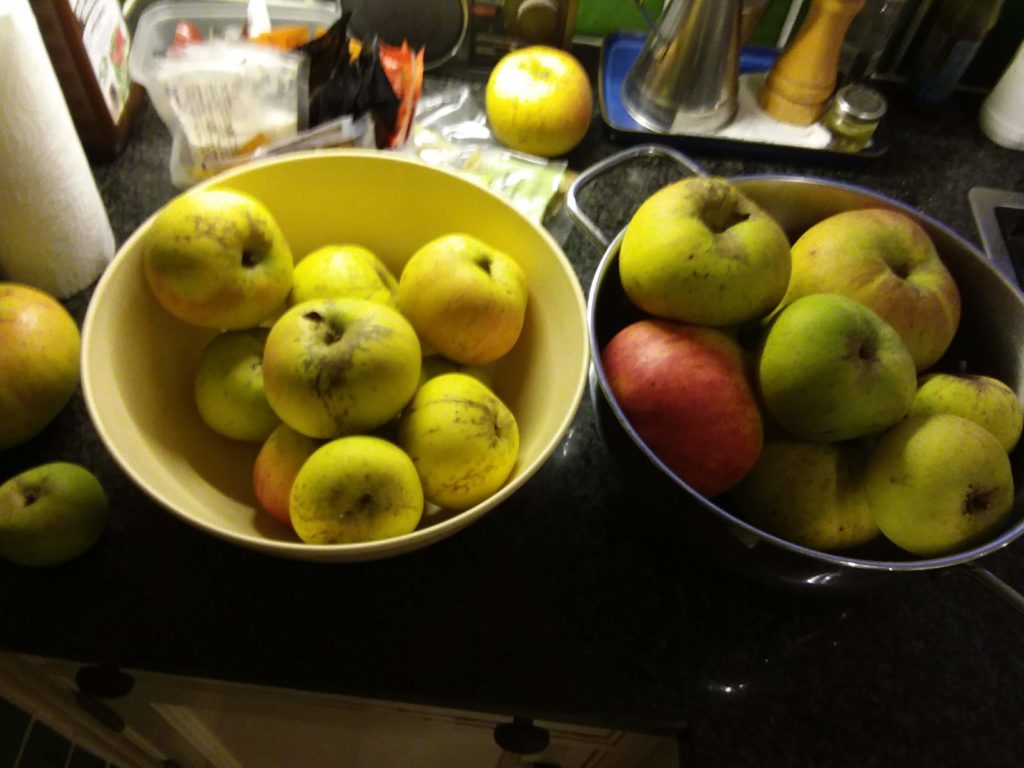An orchard in February doesn’t look like much, but there are promises of spring appearing – snowdrops, catkins, and swelling buds on the trees. High time to prune those apple and pear trees!
Our first task was to prune the older tree, which we’ve been gradually reshaping to a proper ‘tree’ shape (it had grown very siiiiiiideways due to the light from the south being blocked). We went at it somewhat cautiously, pruning a bit at the ends, and removing branches that crossed each other, or went too much straight up.
The variety is unknown but it produces nice eating apples.
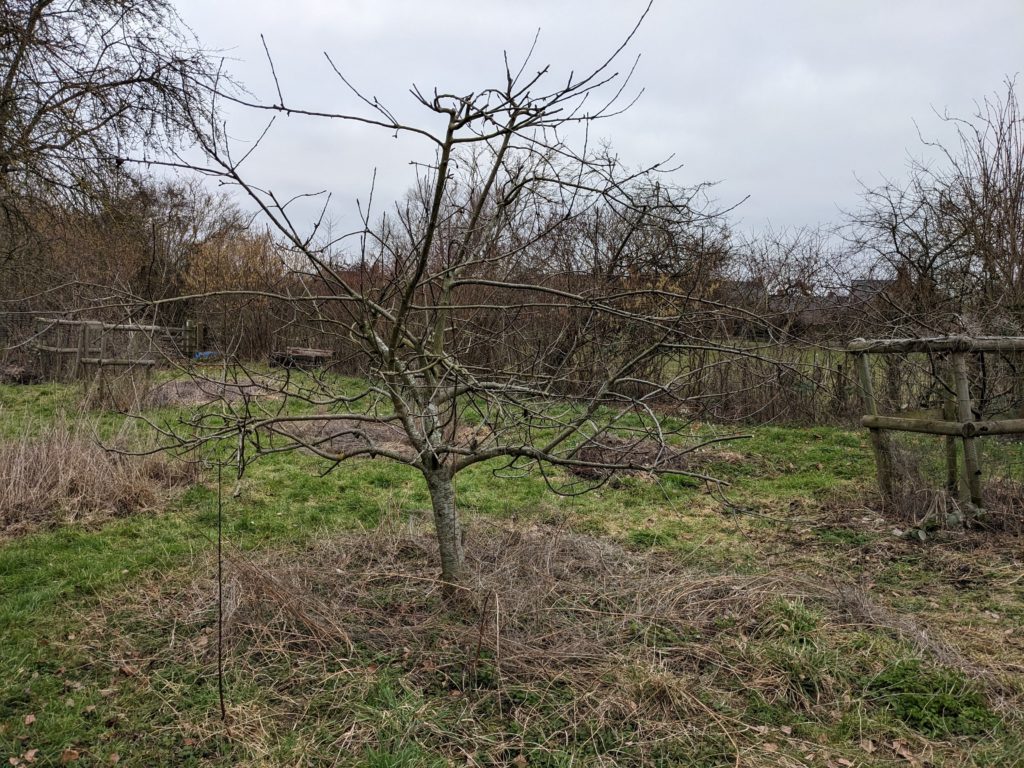
The Hambledon Deux Ans got a bit of a trim, as did the Wyken Pippin. This latter is such a sturdy tree now, and has kind of gone sideways, so Al removed the protective frame around it. We’ve kind of decided to keep livestock out of the orchard now, as it’s clear that the fruit will always be low enough to be munched even by sheep. And the frame was very rickety. But it may be reused later.
